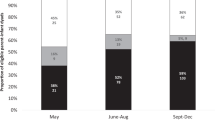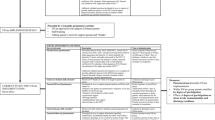Abstract
Objective:
Premature delivery and prolonged hospitalization of infants in the neonatal intensive care unit (NICU) are very stressful for parents. As technology has advanced, short message services (SMS) have been used increasingly in the medical disciplines. To date, the use of SMS for updating patients and families regarding medical information has not been reported. We implemented the SMS technique to daily update the parents regarding the health status of their preterm infant. The objective of this study was to evaluate the use of SMS technology and to assess its impact on the parents and the nursing staff.
Study Design:
Parents and nurses completed questionnaires at two time periods: pre-SMS implementation (pre-SMSi) and post-SMS implementation (post-SMSi). The parent questionnaires included statements about medical information delivery, communication and trust between parents and medical staff, parental anxiety and overall satisfaction. The nurse questionnaires included statements about the expected and actual impact on their workload.
Results:
Comparison of the parents' responses at the two time periods indicated that in the post-SMSi time period, they felt that the physician was more available when needed (P=0.002), they were more comfortable about approaching the physician (P=0.001) and more satisfied with the medical information provided by the staff (P=0.03). In the post-SMSi period, 78.1% of the nurses noted that the SMS communication is a convenient and user-friendly method.
Conclusions:
SMS updating is an easy and user-friendly technology that enriches the modalities of information delivery to parents of hospitalized preterm infants. It is a complementary and useful tool for encouraging and improving personal communication between parents and medical staff and should be considered part of quality improvement in health care.
This is a preview of subscription content, access via your institution
Access options
Subscribe to this journal
Receive 12 print issues and online access
$259.00 per year
only $21.58 per issue
Buy this article
- Purchase on Springer Link
- Instant access to full article PDF
Prices may be subject to local taxes which are calculated during checkout
Similar content being viewed by others
References
Woodward LJ, Bora S, Clark CA, Montgomery-Hönger A, Pritchard VE, Spencer C et al. Very preterm birth: maternal experiences of the neonatal intensive care environment. J Perinatol 2014; 34 (7): 555–561.
Weis J, Zoffmann V, Egerod I . Enhancing person-centered communication in NICU: a comparative thematic analysis. Nurs Crit Care 2013; 20: 287–298.
Peters KL, Rosychuk RJ, Hendson L, Coté JJ, McPherson C, Tyebkhan JM . Improvement of short- and long-term outcomes for very low birth weight infants: Edmonton NIDCAP trial. Pediatrics 2009; 124 (4): 1009–1020.
Schoch DE, Lawhon G, Wicker LA, Yecco G . An interdisciplinary multidepartmental educational program toward baby friendly hospital designation. Adv Neonatal Care 2014; 14 (1): 38–43.
Kaye LA, Johnson A, O’sullivan D, Degroff S . Text message appointment reminders as a tool to improve PPV show rates in an urban resident clinic. Obstet Gynecol 2014; 123 (Suppl 1): 87S.
Albino S, Tabb KM, Requena D, Egoavil M, Pineros-Leano MF, Zunt JR et al. Perceptions and acceptability of short message services technology to improve treatment adherence amongst tuberculosis patients in Peru: a Focus Group Study. PLoS One 2014; 9 (5): e95770.
Jones KR, Lekhak N, Kaewluang N . Using mobile phones and short message service to deliver self-management interventions for chronic conditions: a meta-review. Worldviews Evid Based Nurs 2014 Apr; 11 (2): 81–88.
Bobrow K, Brennan T, Springer D, Levitt NS, Rayner B, Namane M et al. Efficacy of a text messaging (SMS) based intervention for adults with hypertension: protocol for the StAR (SMS Text-message Adherence suppoRt trial) randomised controlled trial. BMC Public Health. 2014; 14: 28.
Conner JM, Nelson EC . Neonatal intensive care: satisfaction measured from a parent's perspective. Pediatrics 1999; 103: 336.
Williams VS, Morlock RJ, Feltner D . Psychometric evaluation of a visual analog scale for the assessment of anxiety. Health Qual Life Outcomes 2010; 8: 57.
Walsh J, Goser L . Development of an innovative NICU teen parent support program one unit's experience. J Perinat Neonatal Nurs 2013; 27 (2): 176–183.
Bracht M, O’Leary L, Lee SK, O’Brien K . Implementing family-integrated care in the NICU: a parent education and support program. Adv Neonatal Care 2013; 13 (2): 115–126.
Leonard KL . Is patient satisfaction sensitive to changes in the quality of care? An exploitation of the Hawthorne effect. J Health Econ 2008; 27 (2): 444–459.
Author information
Authors and Affiliations
Corresponding author
Ethics declarations
Competing interests
The authors declare no conflict of interest.
Rights and permissions
About this article
Cite this article
Globus, O., Leibovitch, L., Maayan-Metzger, A. et al. The use of short message services (SMS) to provide medical updating to parents in the NICU. J Perinatol 36, 739–743 (2016). https://doi.org/10.1038/jp.2016.83
Received:
Revised:
Accepted:
Published:
Issue Date:
DOI: https://doi.org/10.1038/jp.2016.83



